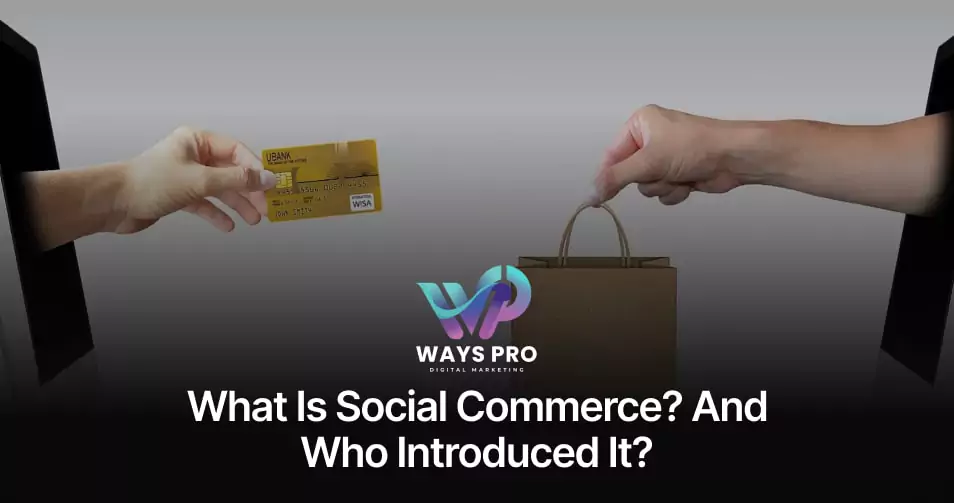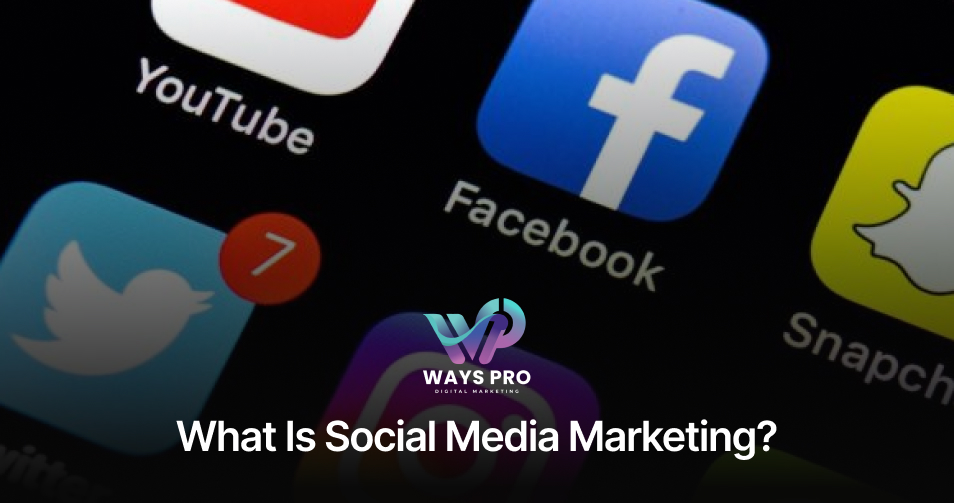When it is already 2024 on its end, even tiny tasks of our daily lives are getting digitized. So, research findings about social commerce wouldn’t be quite shocking. There’s a huge market of 4.89 billion people across social media which has also been predicted to reach $80 billion by 2025.
However, it is surprising that many brands still miss their full potential.
Wait, does it mean that Social Commerce has even more profitable secrets beyond these stats?
Well, yes! Selling on social platforms is about more than just selling—it’s about building a lively, engaging community that you cannot foster and establish with traditional e-commerce techniques.
Social Commerce allows brands to talk directly with customers, collect feedback on products, and drive in-the-moment purchases—all in one place.
In this blog, we’ll take a look at what social commerce is, where it came from, why it matters, and how it could revolutionize how you sell online.
Getting Started With Social Commerce
What is Social Commerce?
Social commerce, or s-commerce, combines online shopping with social media, allowing brands to sell directly through platforms like Instagram, Facebook, and TikTok. But it’s more than just a sales channel— it creates a space for interactive, community-driven shopping where customers and brands connect through likes, comments, and user-generated content.
Who Introduced Social Commerce?
It’s been along us since the 19th century:
While social commerce is increasingly important in today’s world of social media, the study by Nina Bürklin, Claudia E. Henninger, and Rosy Boardman says it is still little studied in the field of marketing—despite its roots in the late 1990s.
Let’s see what the modern world says:
- Social commerce is an idea made popular first by Yahoo in 2005 with its Shoposphere feature that allowed users to compile lists of products they liked.
- From there, social platforms such as Facebook, Instagram, and Pinterest started to work their own commerce features in 2007 with Facebook’s Marketplace, where users could buy or sell products independently.
Social commerce then grew into a platform and it’s become a powerful tool to reach audiences through interactive, social shopping experiences.
Let’s see what importance Social Commerce actually brought to us.
What Is The Importance Of Social Commerce?
- Modern businesses need social commerce.
- It does not just sell, it creates connections. Brands can also engage with customers directly on social platforms by selling directly to them which means they are emotionally connected to themselves without the fear of the time delay between an interaction and the sale.
- This generates trust and creates a community to buy from.
- In addition, potential buyers are willing to purchase thanks to user-generated content such as reviews and posts, which give them social proof boosting their faith to purchase.
- The reality is that it is no longer a fad, social commerce is a very powerful medium that helps people connect, engage, and grow.
There are different types of Social Commerce out there – here’s a breakdown of each of them.
How many types of social commerce are there?
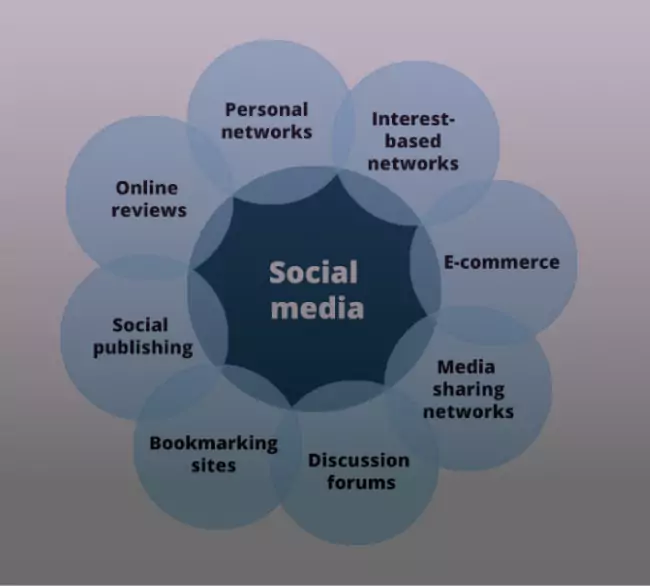
Social commerce comes in several flavors and in several ways to engage the customer. Each type gives brands an extra way to build trust, extend their reach to new audiences, and generally make for a more interactive shopping experience.
Social Networking Platforms: These are the platforms for brands to create posts, ads, and shops and sell on Facebook, Instagram, and other social media platforms.
User-Generated Content: Secondly, the use of customer reviews, photos, and videos on the actual use of the product is another valuable type.
Group Buying: Shared buying experience (group buying), discount for multiple customers when they buy together.
Influencer Marketing: Working with influencers who recommend products to their followers.
You might have heard these types from e-commerce talks, right?
Well, there are lots of differences and even similarities among Social Commerce and E-commerce.
Let us make it easy for you.
Social Commerce Vs. E-commerce: Key Differences And Similarities
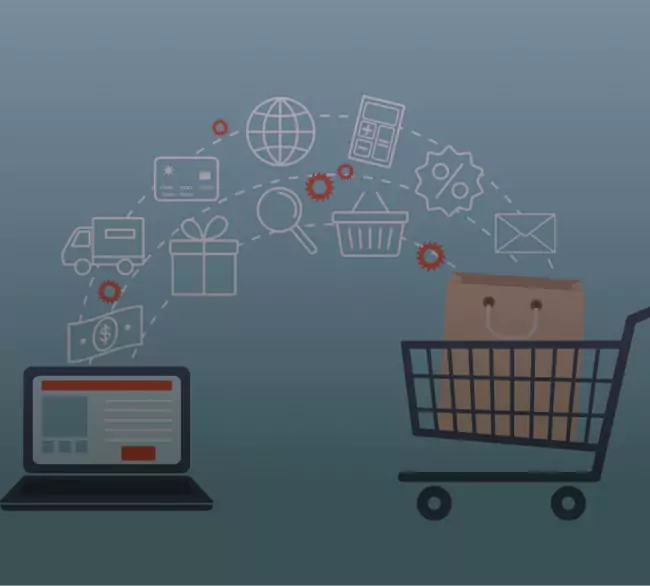
Key Differences Between Social Commerce and E-commerce
| Social Commerce | E-commerce | |
| Platform | Social media sitesFor example: Facebook, and Instagram. | Dedicated websitesE.g., Amazon, Shopify. |
| Interaction | High customer engagement E.g., comments on posts. | Limited direct engagementE.g., email inquiries. |
| Sales Approach | Integrated with social interactions It can be: ‘Buy now’ buttons on Instagram. | Standalone, purchase-focused For example: Add to cart on a website |
| Content | User-generated content-drivenFor example Customer photos on the brand’s feed | Product and brand-drivenFor example: Product descriptions on an e-commerce site |
Similarities in Social Commerce and E-commerce
| Social Commerce | E-commerce | |
| Goal | Drive salesFor example: Boosting posts for sales. | Drive salesLet’s Say: Seasonal discounts |
| Convenience | Easy access, mobile-friendlyFor example: Shopping via app. | Easy access, mobile-friendly.For example: Mobile-optimized sites |
| Customer Experience | Personalized through social features.For example: Personalized ads. | Personalized via site features For example: Recommendations based on browsing history |
Role Of Meta Products In Social Commerce
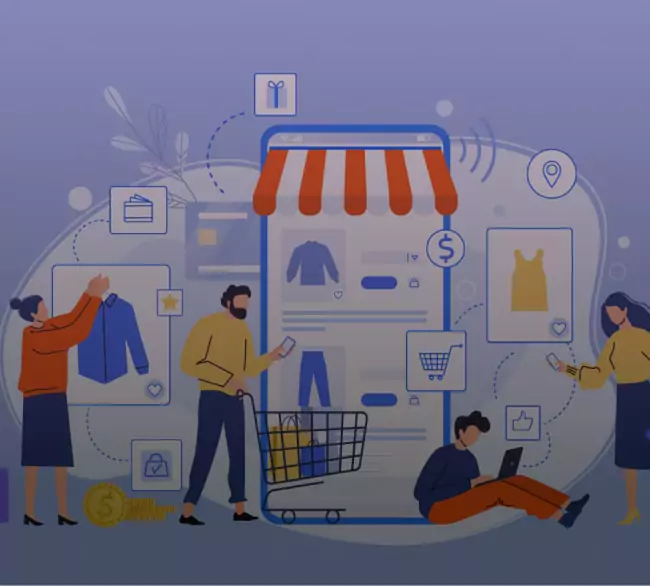
Meta products, like Facebook and Instagram, play a crucial role in social commerce.
They allow businesses to upload compelling products in users’ feeds for easy shopping. For example: a clothing brand builds an Instagram Shop, where People can browse collections, see product information, and buy products all without ever leaving the app.
These platforms also collect user data to show hyper-personalized ads to targeted customer groups. For example: If you frequently speak to healthcare or use fitness content, you maybe would see ads for workout equipment or supplements.
It paves the way to understanding how platforms like TikTok are also now becoming dominant players in the world of Social Commerce.
Is Tiktok A Social Commerce Platform?

TikTok took a big step into the Social Commerce world with the official launch of ‘TikTok Shop’ in 2023. Since then, we have had an easy-to-browse shop tab where users can view categories and easily discover products.
Sellers are able to set up an affiliate funnel and secure checkout, while creators can add products directly to their videos by tagging them, ramping up their ability to earn sales. TikTok already stands out as a social commerce platform when over 100,000 creators and 200,000 sellers have signed up, which shows a lot of interest and engagement.
While direct purchases via social media have been slow to catch mass adoption, social media does matter in product discovery. However, 57% of the respondents in Forrester’s August 2023 Consumer Pulse Survey discovered products on social media, and 52% went on to make purchases due to their positive and favorable experiences.
To reshape user experience, TikTok provides a more reliable shopping journey and helps instill confidence in users to move from discovery to purchase. This shift is an opportunity for marketers to step up their strategies.
Choosing The Right Platform For Social Commerce
Success with social commerce is dependent on choosing the right platform. Unlike offering to users, each platform has its own audience, it has its own features. For instance, Facebook, Instagram, and TikTok.
Think about where your target takes place. Take Instagram as an example; that is a visual content-based platform, while TikTok works much better with short, involved videos. Determine your product type and the platform’s capabilities and evaluate your strategy.
Selecting the right platform starts your foundation for creating exclusive content that speaks to your audience.
Creating Exclusive Platform-Specific Content
Now, comes the most preferable and used strategy that brands have been using these days.
The Platform-Specific Content Strategy.
It increases engagement and sales through exclusive content for each platform. Match your messages and visuals to each platform’s special traits.
For Example:
When you are on Instagram, It is important to focus on high-quality images and stories of the lifestyle of your brand.
Create fun, engaging videos on TikTok that get people’s attention fast. Interaction also directly improves with platform-specific features, such as polls or quizzes on Facebook.
This will help your social commerce efforts to be more effective at audience targeting in terms of your content resonating and standing out with users.
Targeting The Right Audience For Social Commerce

To be successful with social commerce, you need to find and target the right audience.
Here’s how you can do it:
- To begin with, you should review demographic data from the platforms you’ve decided on so that you know how users behave and what they prefer to consume.
- Next, the comments and direct messages help you get clearer insights about what your audience needs. Also, it is the fastest, impactful, and long-lasting way of building connections with customers.
- With audience insights, you make tailored ads that will hit your audiences’ pain points, stimulate their FOMO factors, and make them take action on the Ad.
With this targeted approach, the customer experience is improved, and conversion rates are raised; even the purchase process gets streamlined effectively which leads to higher sales.
Streamlining The Purchase Process
Social commerce is about achieving a streamlined purchase process.
Wondering what’s the trick to streamline the purchase process?
- If you’re selling your product, make viewing your product links easier for the buyers.
- Cut down on the number of steps required to purchase something and minimize cart abandonment.
- Make purchasing convenient with features such as one-click purchasing, and stored payment.
- Your site or shop must load quickly and be mobile-optimized.
- These calls to action are always clear about what you need to do next.
- Simplifying this process helps you improve customer satisfaction, and increase repeat purchases and positive feedback.
At the same time, if every week about 30% of global internet users prefer to make purchases while using their mobile phones, then imagine the opportunity to scale up your brand by optimizing its social commerce strategies for mobile phones.
Here’s more about this:
Optimizing Social Commerce For Mobile

In the current digital world mobile social commerce optimization is extremely important.
But How?
- First of all, most users like to shop on their smartphones, so make sure the content on your site is mobile-friendly.
- Open up the use of responsive design, which turns based on the size of the screen, to make navigation easy.
- The pages have to load fast; if your site is too slow, potential buyers will leave before looking at your products. Get rid of the need for waiting for a payment, and integrate mobile payment options like digital wallets.
- Provide mobile-specific promotions such as flash sales or exclusive discounts and engage users.
Promoting mobile optimization helps improve user experience and consequentially leads your business to encourage customer reviews and feedback.
Encouraging Customer Reviews And Feedback
It’s important to encourage customer reviews and feedback. Also, people love to see themselves featured online.
Therefore, remember and implement these points:
- Firstly, the option or feature of post-purchase review, comments, or feedback should always be ready for customers.
- Think about giving feedback in exchange for discounts or loyalty points.
- Highlighting the positive reviews prominently on your social media and product pages will for sure attract some new customers.
- Respond to feedback, for positive and negative comments, and show you care about customer opinion.
- This interaction creates a community, increasing engagement and loyalty, and benefits your social commerce strategy.
Still, there are many mind-blowing facts and figures about Social Commerce. Let’s take a quick look at them & we’ll wrap up the discussion then.
Mind-Blowing Stats About Social Commerce
In the US social commerce sales will be $107.17 billion in 2025, which is 7.2% of online sales in the US by 2025. In 2021 sales grew 46.5% from 2020 to $39.51 billion. Basically, this is a sign that social commerce is spreading quickly in the US and will still continue to develop in the future.
Social commerce revenue is expected to grow to $6.2 trillion by 2030. This thoughtful prediction is a huge rise from $1.3 trillion in 2023. The growth is partially a result of the rise in popularity of live streaming shopping, and social influencers, as well as social media auctions. Live stream shopping enables a person to see a product demonstration or have conversations with a seller in real-time.
In 2025, 33% of all purchases will come from the most active social commerce customers, millennials. People born between 1981 and 1996 are the generation of millennials. They’re comfortable shopping online and updating their social media feed. Therefore, they are the main target market for social commerce businesses.
Product impression or discovery on Social Media leads 11% of social media users to purchase immediately. If people don’t buy a product online, the second day they see it on social media, in such cases 44% of social media users are found interested in making a purchase.
Conclusion: How Social Commerce Can Transform Your Business
Social commerce is transforming the retail environment, presenting amazing growth opportunities for businesses.
Live shopping is a profitable way through which you can cash a lot. We’ve also seen above that live shopping is expected to grow a lot by 2030, so invest in it, work with influencers, or both.
Having seen this growth, U.S. sales are projected to triple by 2025. This rapid expansion indicates that brands must adjust their strategies for explosive growth.
Also, create campaigns focused on figuring out how to target millennials because they will represent a large proportion of future purchases by 2025.
Moreover, brands should also optimize their social media with retargeting options because a big chunk of users are ready to buy immediately upon discovery of a product and the remaining set of users are interested the next day.
Stay in touch with WaysPro Tech and stay informed with such amazing facts and helpful guides in the world of Digital Marketing.

